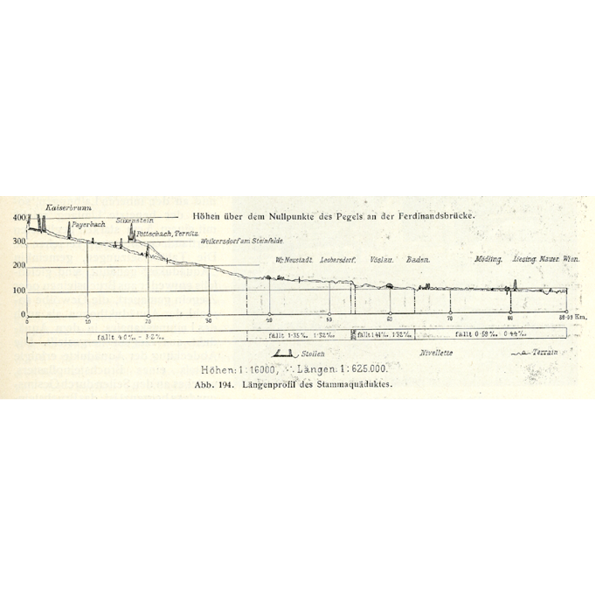
The Romans, with their appreciation for the spa and their aptitude for hydro-engineering were the first to connect Vienna via aqueducts to the Alpine springs and their mineral rich water. By the middle ages the city had regressed, sourcing its water from the Danube and from wells, the wells drawing from aquifers also fed by the river. However this river, a drain of nations, brought with it disease and by the 19thC even the dirty water was in short supply.
The first pipeline of the Hochquellenwasserleitung (HQL) was completed in 1873 and is nearly 90 km long. It was created with a 19thC pride for civil engineering, built “in the style of Adam; namely, naked and strong”. The system requires no mechanical pumping, gravity driving the water to the city. Tunnels and aqueducts traverse the hills and valleys that lie in the way. The system runs so well, that energy must be removed from the system to reduce the pressure.
A second pipeline was added in 1910, doubling capacity. Vienna can now provide up to 589,000 m³ daily, with an average consumption of around 375,000 m³. The majority of their water sourced from the two pipelines. The excess capacity is important to allow for peaks in consumption, and to give room for failure or planned maintenance. The first pipeline suffered major damage in 1945, when bombing led to a large amount of gravel entering the system, damaging pipes and slowing water flow. Repairs to remove the gravel took several years.
Pipelines allow cities to grow beyond the natural limits imposed by their water supply. Water is sourced from aquifers and rivers, and in some cases transported over thousands of kilometers. From Tripoli to Los Angeles, cities slurp their water with these long straws. Whilst some supplies, such as the Alpine springs, are abundant, in other locations the piping of water comes at a cost. Former farming communities in California have lost their ability to grow, their water taken by Los Angeles, The 1400 km long Colorado River runs dry by the time it reaches the Mexican border. The Colorado river is entirely used to supply cities such as Las Vegas and for agricultural irrigation. Pipelines can result in cities drinking the surroundings dry, damaging environments far beyond the municipal borders.
← Back to Lexicon
1st Wiener Hochquellenleitung Section
Sources: Vienna at the beginning of the XX. Century - A guide in the technical and artistic direction (Vol.1)
